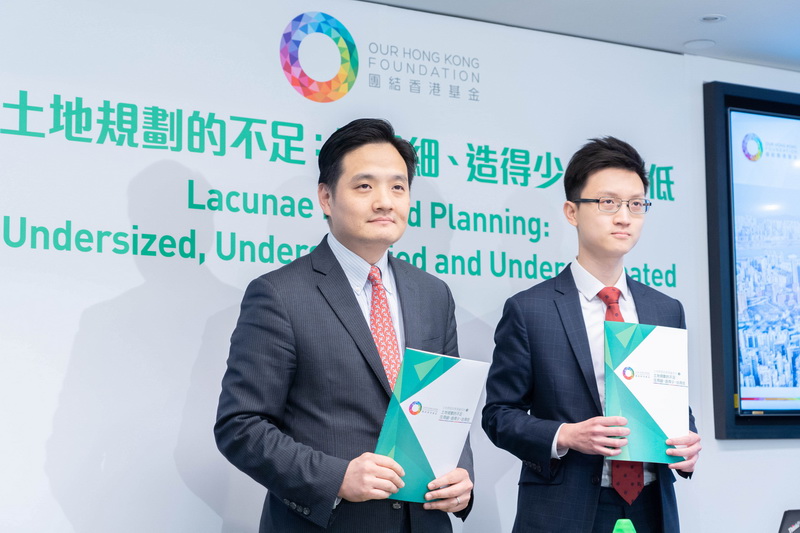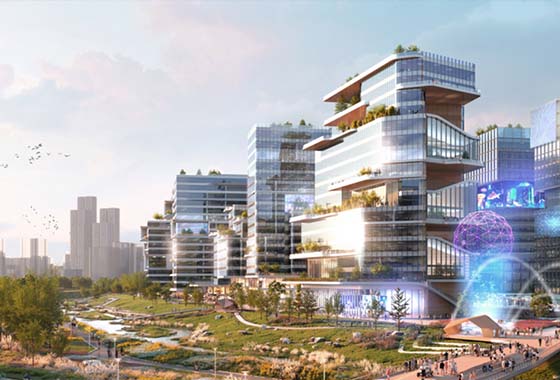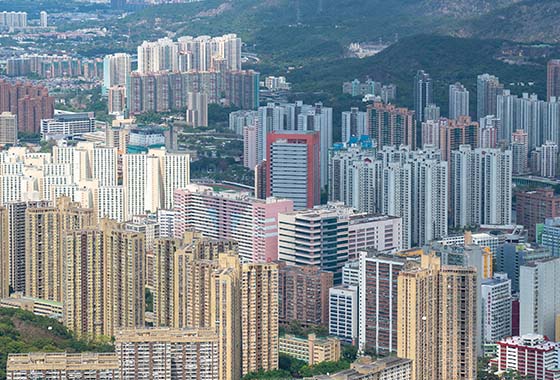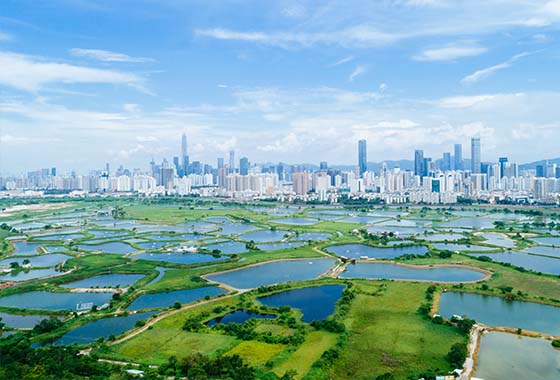OHKF Pinpoints Lacunae in Land Planning
Research shows shortfall in land and housing supply leads to deteriorating quality of living
Large-scale land reclamation remains the most effective solution

Our Hong Kong Foundation (“OHKF”) released an update at 17 April on Hong Kong’s current supply of land and housing in a public policy advocacy report entitled Lacunae in Land Planning: Undersized, Undersupplied and Underestimated, demonstrating how depleting land sources without a sufficient channel of replenishment has led to a deterioration in the quality of living.
The report delivers a comprehensive forecast on private housing in Hong Kong between 2018 and 2022 and an estimation on the supply of public housing for the coming decade, while highlighting three appalling dilemmas regarding land development undermining the living environment, affordability of housing and long-term economic growth of Hong Kong.
Issue 1) Undersized: Despite their surging prices today, flats are shrinking in size. Hong Kong’s average living space per person is intolerably low at 170 square feet per capita, lagging behind the 300 square feet in Shenzhen, 270 square feet in Singapore and 210 square feet in Tokyo. Furthermore, “nano-flats” are becoming more common – from 64 units completed in 2014 to 1,066 units in 2019, a 17-fold increase. Measuring less than 215 square feet each, or just enough space to park 1.6 regular-size 4-door cars, these “nano-flats” give rise to a stressful environment for its inhabitants.
Issue 2) Undersupplied: Hong Kong had stopped creating new land in the past decade or so, meaning land available for development has dwindled significantly. As a result, rezoning of existing land has become the primary means of land supply, which is highly uncertain and ineffective because of the lead time involved and public scrutiny, causing many proposed projects to undergo rounds of delay.
Issue 3) Underestimated: Because the government underestimated land demand in its 2007 Territorial Development Strategy “Hong Kong 2030: Planning Vision and Strategy” (“Hong Kong 2030”), hence the population density in Hong Kong is now as high as 27,400 persons per square kilometre, which is on par with Mumbai in India. For an economy as advanced as Hong Kong’s, this degree of overcrowding is deplorable. Unfortunately, in the more recent “Hong Kong 2030+: Towards a Planning Vision and Strategy Transcending 2030” (“Hong Kong 2030+”), the government’s estimation of demand was still overly-conservative as it neglected the need to improve per capita living space and increase the area for supporting facilities. OHKF estimates that Hong Kong will need more than 9,000 hectares of new land (roughly three times the size of Sha Tin) over the next three decades, by far exceeding the 4,800 hectares suggested in “Hong Kong 2030+”.
“The current state of housing in Hong Kong can be summed up in three words: undersized, undersupplied and underestimated”, said Ryan Ip, Senior Researcher, OHKF. “Hong Kong is paying a hefty price in that many are having to live in homes that are getting smaller and smaller but aren’t any cheaper price-wise”.
According to the report, the average yearly completion of private housing is forecasted to be 20,800 units in the years between 2018 and 2022, but the average unit size of newly constructed flats is expected to shrink continuously. Therefore, the quality of living of Hong Kong residents is actually on the decline.
“The average size of all completed private housing units is expected to be 681 square feet between 2018 and 2022, or some 18% smaller than the average of 833 square feet in the preceding decade”, Ip explained. “If the shrinkage of unit size is taken out of the equation, then the adjusted completion rate of private housing between 2018 and 2022 is not 20,800, but only 16,900 units per annum, failing to meet the Long Term Housing Strategy target of 18,000 units per annum”.
In public housing, OHKF estimates only 217,400 public housing units can be constructed in the next 10 years (2018/19 - 2027/28), a number which falls 22% short of the government’s target of 280,000 units. Going forward, more uncertainty and unpredictability in the supply of public housing is expected because 70% of development projects as planned are heavily reliant on rezoning. Rezoning, particularly of Green Belt sites, typically receives significant opposition from the public and may be subject to lengthy judicial review processes.
Shortage in land and housing supply is attributable to the government’s inadequate planning in the past
OHKF points out that the issues addressed above can be attributed to the fact that there has been a virtual cessation of land development in over a decade leading to a dearth of “spade ready sites”. From 1995 to 2005, the total area of developed land in Hong Kong increased by 6,000 hectares. In contrast, from 2005 to 2015, there was only an increase of 400 hectares. Taking reclamation as an example, from 1985 to 2000, Hong Kong created over 3,000 hectares of land through reclamation. However, between 2000 and 2015, the figure dropped 80% to 690 hectares.
As a matter of fact, land development in Hong Kong is inseparable from the development of new towns. In the 1970s, six new towns including Tsuen Wan and Sha Tin were constructed. In the 1980s, Tin Shui Wai and Tseung Kwan O were constructed as the second generation of new towns. However, after the development of Tung Chung New Town in the 1990s, no new towns have been created since 2000. The main reason for this is because of the underestimations in “Hong Kong 2030”, published in 2007. For example, the government opined that Hong Kong could meet the demand for residential land without any large-scale development of new towns, as happened in the past.
Large-scale land reclamation outside Victoria Harbour is the most effective option of land supply
In Hong Kong, 62% of land is “locked up” or “semi-locked up” by law or regulatory constraints for environmental reasons and cannot be developed. This land encompasses country parks, environmentally sensitive areas and Green Belt zones. On the other hand, only 24% of the land is utilised for residential, commercial, GIC, recreational and transport purposes, to name a few. Consequently, Hong Kong’s population density has reached 27,400 persons per square kilometre of developed land, higher than that in major cities such as London and New York, and almost three times that of Singapore.
“As the government ‘underestimated’ in the past, land was ‘undersupplied’, causing citizens to reside in ‘undersized’ and cramped environments. In spite of that, the government continues to underestimate the future land demand”, said Stephen Wong, Deputy Executive Director and Head of Public Policy Institute, OHKF. “We believe ‘Hong Kong 2030+’ has not taken into account the need to improve the per capita living space, decrease population density and tackle the existing shortfalls in space for offices, hotels, retail outlets, healthcare facilities, recreational and sports centres as well as other crucial infrastructure”.
Wong added, “Any potential development plans on existing developed land will only exacerbate the issues of high population density and overcrowding. If we aim to improve the quality of living and foster sparser living spaces, it is crucial that we look for new sources of land supply. The most effective method to increase land supply is through large-scale reclamation outside Victoria Harbour. Compared with other land supply channels, reclamation is the only long-term solution that can provide large, flat and high-quality land”.
Regarding the short to medium term, a proactive, multi-pronged approach must be taken. To this end, OHKF has identified two plots of hillside areas – termed “unzoned hills” – in Shap Sze Heung after a thorough scrutiny of public documents. These “unzoned hills” are developable land falling outside of country parks or other environmentally sensitive areas and not covered by any statutory plan, and could potentially supply up to 30,000 public housing units. OHKF would like to invite the government to consider them as sites with serious potential for limited-scale development.



